3 JULY 2011 NEWSLETTER
SLOVENIA
From Zamps Zamparini
‘Just got back from Slovenia. It was an eye opener; never thought that the fishing would be this good. I caught this 5kg trout in a small river called the Tolminka on a size 18 nymph.

The rivers were teeming with fish; I spotted one that must have been 10kg.
I caught 20 plus fish in 2 days; a better fisherman would have caught 100. Line drag was my nemesis.’
RHODES IN WINTER
From Gavin Urquhart
‘Since you are planning on fishing in Rhodes this July, I thought that I could give you a report on current fishing conditions, gleaned from a trip today over Naude's Nek to Maclear. I have attached some photographs, of which I hope the titles, which include the time taken, are sufficiently self-explanatory.
The ice in the Bell at Dunley caught my attention first, just at the beginning of the beat.

The Dunley beat, Bell River, 2 July 11.20 am
The roadside icicles just past Bobbenjaanskop were a hint of things to come,
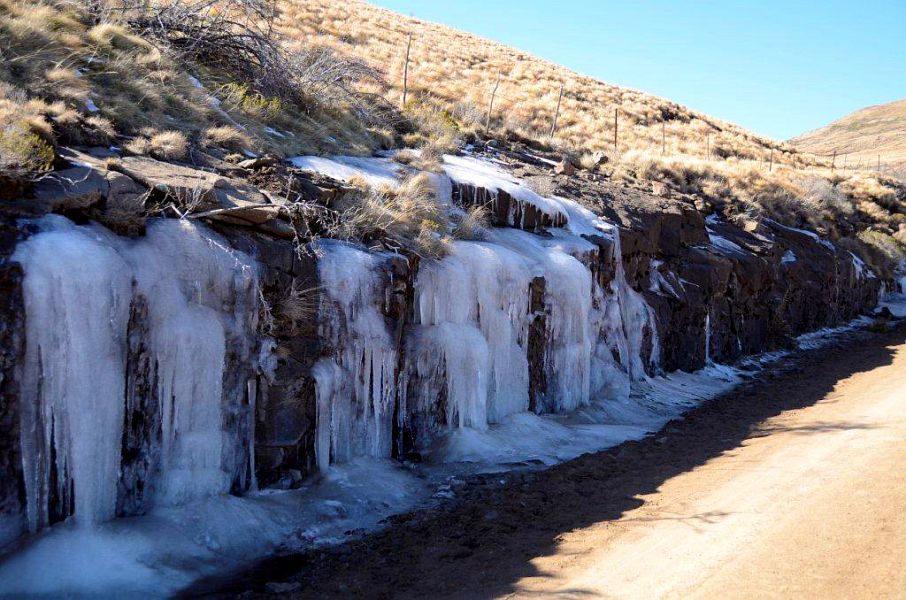
Bobejaanskop, Naude's Nek Pass, 2 July 11.33 am
as was the view to the snow covered mountains to the north, approaching Boarman’s Chase.
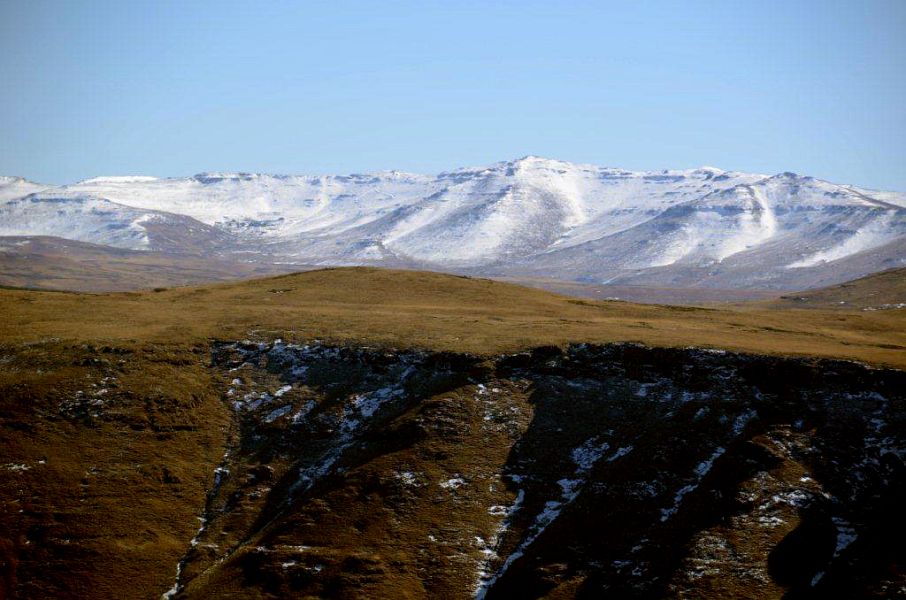
The Bell at Boarman’s Chase was pretty well iced, although the water was still flowing strongly, as can be seen in the Boarman’s Chase Detail Photo.
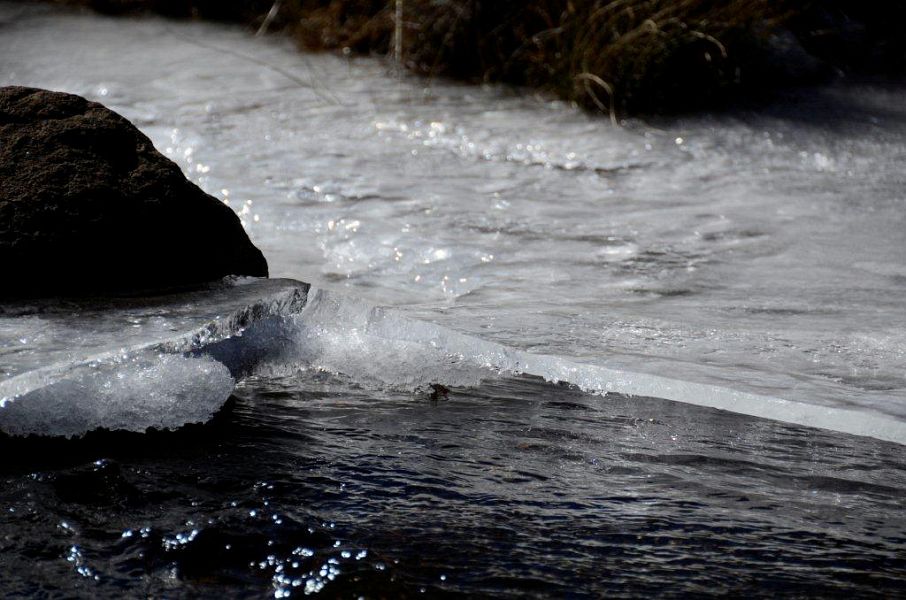
Boarman's Chase 12.10 am
As you know, I know very little about fly fishing, and therefore hesitate to offer any kind of advice in this regard to you, but even to a novice it is clear that two things are absolutely necessary – whisky and thick neoprenes!
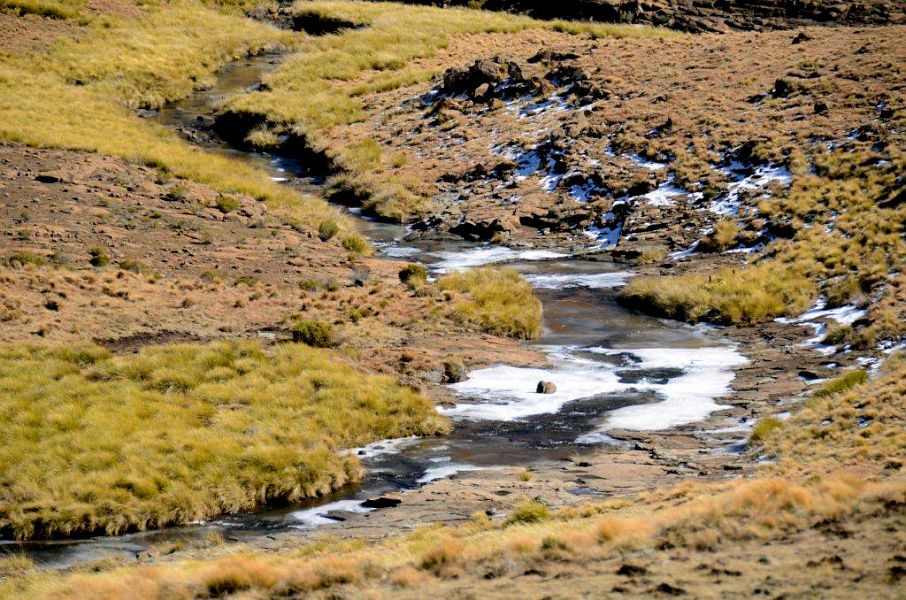
Boarman's Chase 2 July 12.06
The good news is that the Bokspruit and the Sterkspruit were flowing normally with no signs of ice at all. I came back over the Bastervoetpad and then over the Lindesfarne Bridge, so did not see the upper reaches of the Bokspruit.
GARY GLEN-YOUNG’S ‘G FORCE’ BAETIS NYMPH IMITATIONS
Gary, a remarkably good fly tyer and member of the Protea National fly fishing team, sent me some examples of the evolution of hisy G Force Baetis nymph imitations he developed and is using with great success.

An earlier version of the G Force nymph using squirrel tail - Gary now only uses black Organza fibres
Tied on Mustad C 49s scud hooks, Gary bends the shank up slightly to improve gape width (see his note at the end of this article). He dresses the shank with Benecchi 12/0 white having moved off Gordon Griffiths 14/0. He uses black bridal organza fibres for the tails and legs (squirrel on earlier patterns), covers the body with Flashabou and ribs with fine silver or copper wire. The thorax is a mixture of dubbings he mixes to his own taste. He makes very important and valuable points about the Flashabou and the dubbings at the end of this article.

The latest G Force. Note the distictly lighter under belly of this fly and the darkened sides and top of the abdomen. All mayfly nymphs are lighter on the ventral surface of the abdomen and darker on the dorsal surface
He adds a Flashabou wing-case to nearly all these patterns.
The abdomen is coloured top and sides only with a black or brown Koki pen, depending on the pattern.
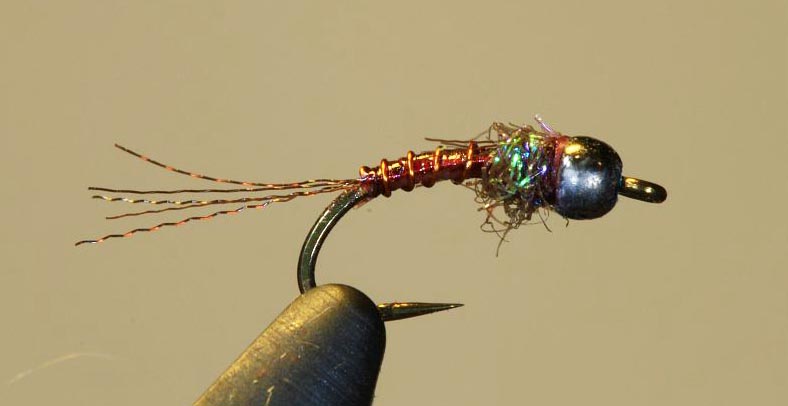
Brown intermediate version, with no wing case and the whole abdomen coloured. Tungsten bead on this pattern.
The bead is either a silver or copper lined glass bead (after the Mercury flies of Pat Dorsey as seen in Tying and Fishing Tailwater Flies) or tungsten. See Pat Dorsey’s book athttp://www.netbooks.co.za/Main.asp?D={462D9849-4D93-4B6B-9D06-DFDFD66A3CAB}&PageType=Product&SKU=9780811707220
Gary sources his copper or silver lined glass beads from bead shops, preferring a Japanese brand called MIYUKI in sizes 15/0 for size 18 flies and smaller, and 11/0 and 8/0 for larger flies.

Silver lined glass bead on an earlier version of the fly
(For holographic dubbing see http://www.amazon.com/Anglers-Choice-Ultra-Holographic-Dubbing/dp/B002J9DE58)
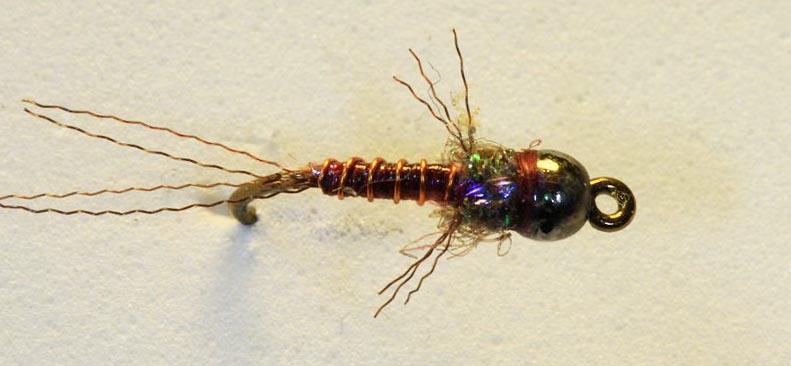
Showing the Flasabou wing case that Gary normally ties a little wider than illustrated here
ADDITIONAL POINTS ON THIS PATTERN AND ITS EVOLUTION FROM GARY:
I specifically sent you different evolutionary version of the fly. The article on the evolution of the PTN on your site was what made me decide to send these flies to you.
The oldest versions have pine squirrel for tails, a body that is coloured on all sides (I used to pre-colour the flash, before tying it in) were possibly tied with coloured (not white thread) and have no wing case.
My latest evolutions all use organza tails, the abdominal Flashabou coloured on 3 sides once on the hook, always using white thread (only coloured with a marker at the end to whip-finish). All now have flash wing-cases and size 14 and larger have organza legs.

The Mustad C49S is 1X short, so a size14 C49S has the same usable shank & overall length as a standard size16, but with stronger wire. In addition, the gape is substantially wider than a standard size 16 - more like a standard size12 gape. This results in far better hookups on fish, especially when you get to size16 (equivalent to standard size 18) and below. The hook point is also longer than the equivalent length standard size16.The wire is strong enough to also handle smallmouth yellowfish, but fine enough to penetrate easily. Since this hook comes in size 6 down to size 24, it allows me to use the same hook for all my caddis (size 6 to size 14 are left unmodified) and mayfly (size 12-size 20, sometimes size 22), the shank is straightened with smooth jaw pliers.
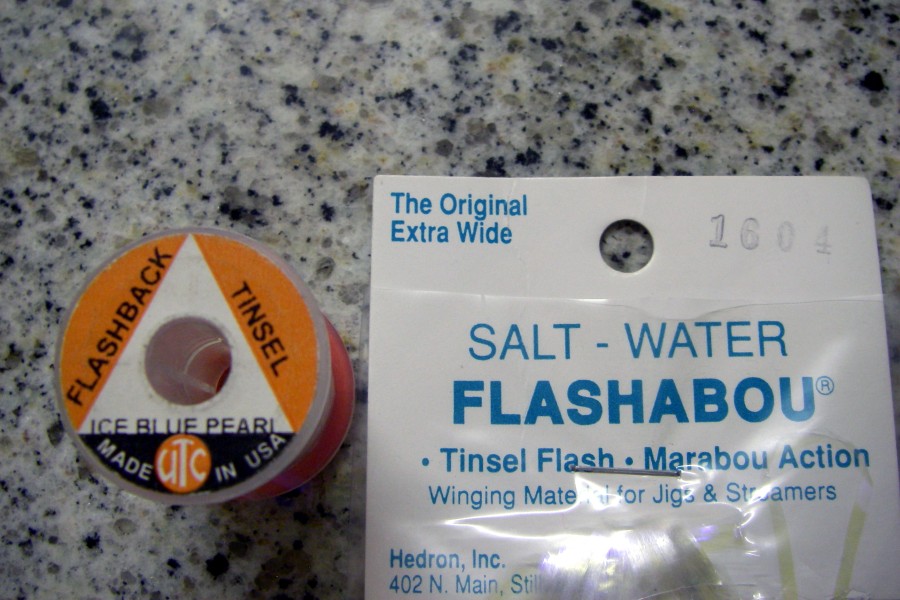
The Flashabou is very specific and critical to the pattern. UV Flashabou is used, rather than the normal Pearl Flashabou and this makes a significant difference. The flash is actually very subtle, but the UV element comes through strongly, which the fish really seem to like. I have found two sources of supply - either hanks of Saltwater Flashabou Code 1604 (NOT 1605, which is Pearl) or spooled UTC Flashback Tinsel - Ice BLUE Pearl (not Pearl). Both are the same product and are used as is for size12-16 patterns. For size18 and smaller, you need to stretch the flash by repeatedly but smoothly siding one hand down the length, reducing the diameter.
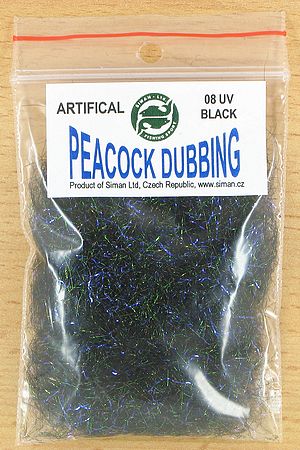
For the Brown version, Hareline Ice Olive Brown is used, which is freely available. For the black version, I checked again what I am currently using. It is a mixture of Wapsi Black Superbright, SLF Prism in Black & Siman Peacock Dubbing (08 UV Black). http://shop.siman.cz/dub4x0.htm.
OTHER IDEAS WITH GLASS BEADS FROM ED HERBST AND PETE BRIGG
Says Ed,
‘I tied an egg-laying baetis imitation with the bead inside a loop wing which combined UV Midge Flash and Antron. This was to imitate the bubble of air that the female mayfly traps beneath her wing when she crawls underwater to lay her eggs.

Egg laying Baetis pattern (Photos per Ed Herbst)
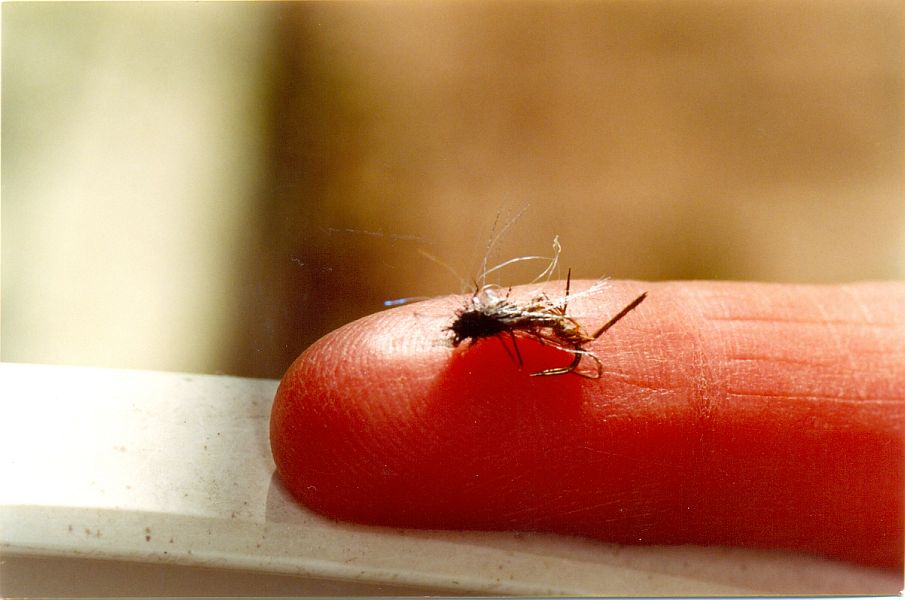
I fished it on top beat of the Holsloot a few times and the fish really tore it apart – the leader would just stab forward. This would have been about 1991.
Then I stopped using it for some reason.’

Examples of Pete Brigg's glass bead soft hackles (Photo per Peter Brigg)
SAGE TO LAUNCH ‘THE ONE’ ROD
From Ed Herbst
In August/September 2011, Sage Manufacturing will be launching The ONE rod series.
Says Sage,
‘The ONE rod is the first fly rod to take advantage of Sage’s groundbreaking Konnetic technology.
The ONE offers exceptional tracking with virtually no lateral or torsional movement, resulting in what Sage claims is unparalleled casting accuracy.
The inherent strength of Konnetic technology allows ONE rods to have a smaller diameter as well as weigh 25 percent lighter than comparable Sage rods. These attributes combine to provide augmented aerodynamic efficiency.
Further innovations are the 70 percent lighter, low profile ferrules that help direct and carry energy through the rod without sacrificing strength, critical action and feel.’ (end quote)
See:
http://midcurrent.com/2011/06/23/sage-redefines-casting-accuracy-unveils-the-one-fly-rod/
FROM JAN KORRUBEL IN KZN
Up here in The Midlands we are enjoying crisp and clear weather and those brave enough to be out and about in the low light of early morning and late afternoon are being rewarded with some good sight fishing. With the stillwaters now vodka clear, the fish tend to move off the banks and away from the walls as the sun gets up. Flies of choice at the moment are predominantly white (e.g. White Death, white Cat's Whisker, white crystal bugger and pale Minnow patterns) with some fish being taken on the popular winter colours of orange, yellow and purple. And of course the ubiquitous egg patterns...

Mat Gorlei, Protea junior team member
I haven't had any river or stream reports apart from that the rivers are not as low as they might have been without the recent rains.
Earlier this week I was pleased to be involved in a development fly fishing day held under the auspices of the KZN Fly Fishing Association involving the Tendele Community outside of the Kamberg Nature Reserve.
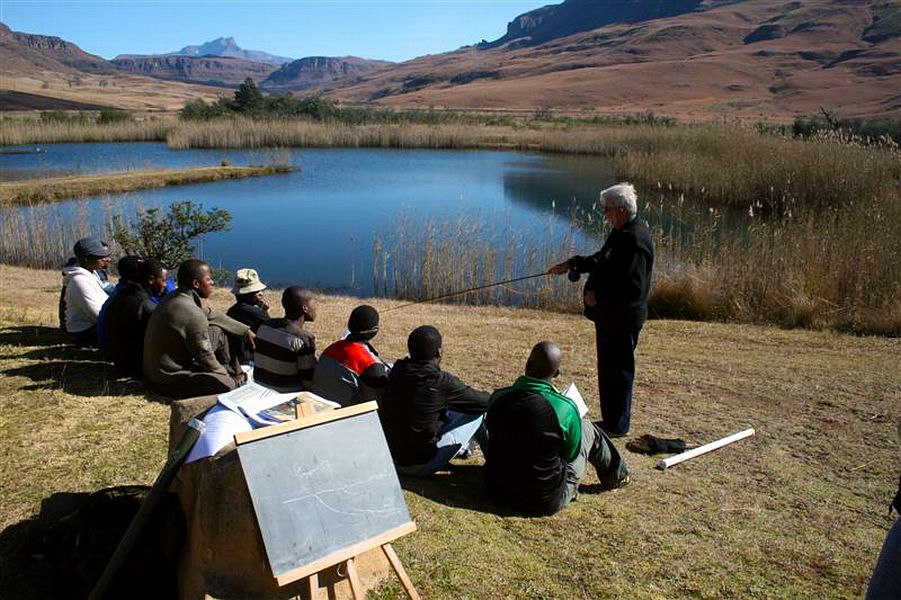
Jan de Jager demonstrates fly casting
A number of the youths who were recently approached to assist in marshalling the Ladies Trials in the stretch of the Mooi River running through the community expressed an interest in learning more.

Well, 10 young people arrived at Kamberberg Nature Reserve on Tuesday morning for a two day fly fishing clinic, and all I can say is that while I arrived with some "under expectations", these were surpassed...and then some!
A number were total naturals at the game and after some instruction could cast a line almost to the backing without any sign of a double haul!
Hat's off to the KZN FFA and Linda, Richard and Matt Gorlei (Matt is one our Protea Juniors heading off to Italy for Worlds shortly), and committee members Jan de Jager, Zena Fogg and Ed Standon for taking this initiative forward. Thalia Thain also popped her head in for the morning.
THOUGHTS ON THREADS FOR TYING TINY PATTERNS
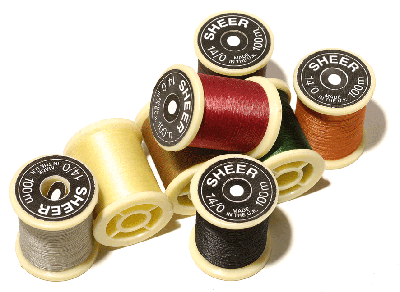
I have always used Siman threads for my micro patterns because it is two strands not just one, so although fine, it is amazingly strong. It also came in a wide range of colours. The big problem was its instability on the hook, meaning it unravelled easily. It was also not that good for dubbing and had little of the ‘floss’ characteristics so many people like in a thread. Jan Siman is now promoting Dyneema Power Silk 10/0 Thread on 50 metre spools. Says Siman, “Imagine a really fine 10/0 that is unbreakable! Fantastic for using on everything from streamers with large bulky materials to tying micro-patterns.” I have some spools on order and will let you know. The range of colours is outstanding as well. But it may just be the same product as Roman Moser’s Power Silk 10/0
Another thread worth a try is Wapsi’s UTC 70 denier Ultra Thread, also available in a range of colours.
http://www.wapsifly.com/utcthread.html
Also new and interesting seems to be Semperfli Nano Silk, but again I wonder if a lot of these products don’t have a common origin somewhere. (http://www.theessentialfly.com/semperfli-nano-silk.html)
Here are the views of a few other people on what is currently available by way of threads for micro-patterns.
From ‘Tying Small Flies’ by Ed Engle, Stackpole Books 2004
Gudebrod 10/0: The thread is silky to the touch and lies very flat. It’s a true midge thread, wonderful to tie with. My life is changed.
Gordon Griffith’s 14/0 Sheer: This thread is my old friend. It’s an excellent thread for tying small flies.
Benecchi 12/0: This thread flattens nicely. A perfectly serviceable small-fly thread.
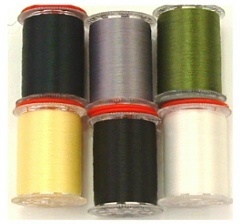
Benecchi flt tying threads
(see Ed Engle’s book review at http://globalflyfisher.com/reviews/books/bookbase/show_single.php?id=69 )
and available from NetBooks http://www.netbooks.co.za/Main.asp?D={3A52C85C-8473-44A6-A635-5BA87B50F112}&PageType=Product&SKU=0811700828+++++
![]()
From MC Coetzer
The Gordon Griffiths is a great thread but I personally prefer the Benecchi. It has pretty much the same diameter as the Gordon Griffiths and is just as user friendly but it comes in a much wider range of colours. The big difference is that the Bennecchi has a very “lively” shine – not bright or flashy....... just right.
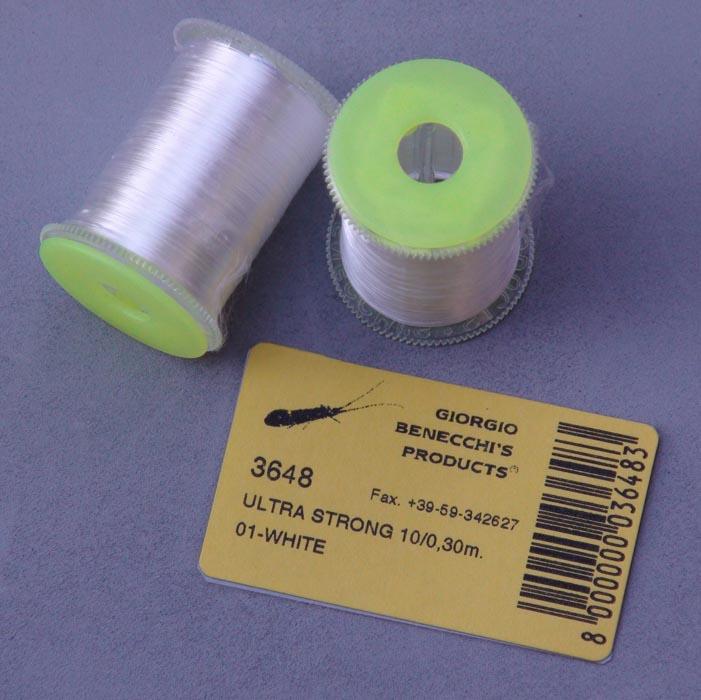
From Ed Herbst
Darryl Lampert feels that the Gordon Griffith 14/0 Sheer – available from Stream X – is the best for split thread CDC techniques but it tends to bunch up a third of the way through the spool. Darryl rewinds these onto midge bobbins on a sewing machine and that solves the bunching problem. You can get a beautiful Wasatch midge bobbin from Bill Morrison at Bearlodge Angler.
This email address is being protected from spambots. You need JavaScript enabled to view it.
http://www.bearlodgeangler.com/

EXTENDED BODY FLY TYING TOOLS
From Ed Herbst
Says Ed,
‘Just to let you know that Craig Thom at Stream X is importing the full range of J:sonSweden fly tying tools. This will include their extended body tools.
Late last year when Andrew Ingram and I visited Mario Geldenhuys in Aliwal north to film his fascinating little extended body foam inch worm pattern for our DVD series on indigenous flies, he tied it on a needle.
The extended body tool makes it a lot easier and a lot less dangerous.
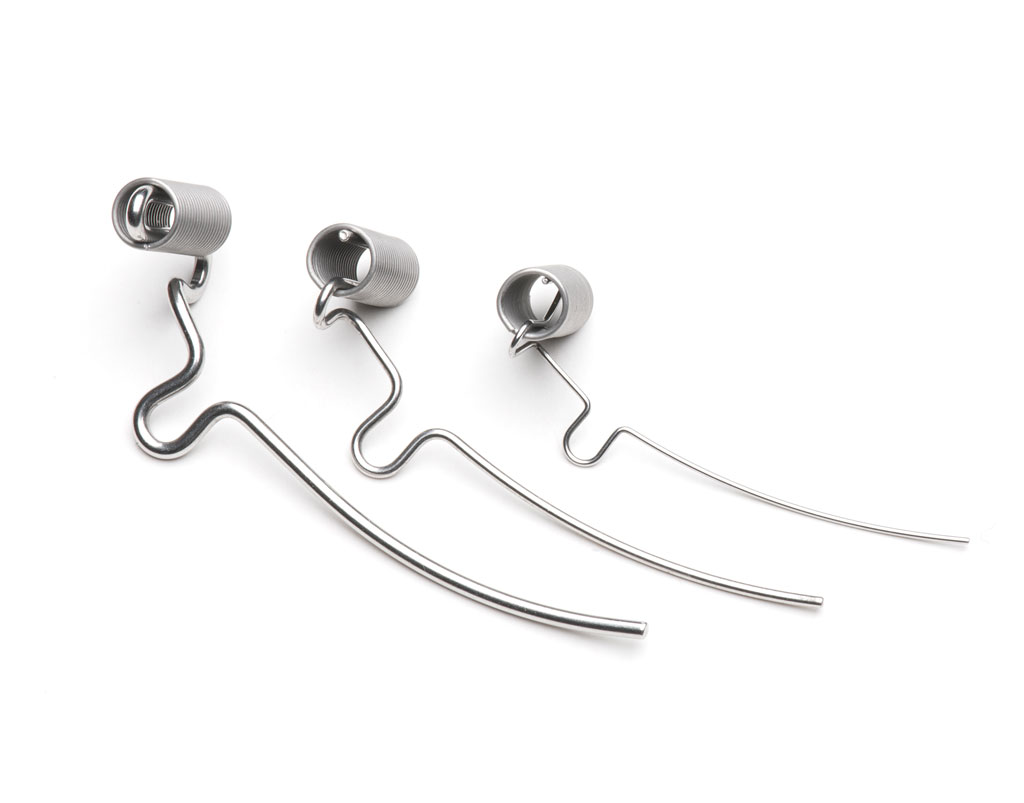
The J:sonSweden website includes videos and step by step instructions and I also include here a link to the similar Renzetti item. This is very exciting to me because it makes the possibilities for my hopper pattern a lot more interesting.’
Here are the links:
http://www.flytyer.com/index.php?option=com_content&task=view&id=2993&Itemid=100
http://www.jsonsweden.com/en/node/27
COVER DESIGN FOR HUNTING TROUT
My daughter Alison has been working on the new cover for the second edition of Hunting Trout. Here are the two prototypes we are so far pleased with, a pastel-coloured photograph of an angler on an Eastern Cape lake and a black and white shot of myself fishing a Cape stream. We can’t decide which we prefer.
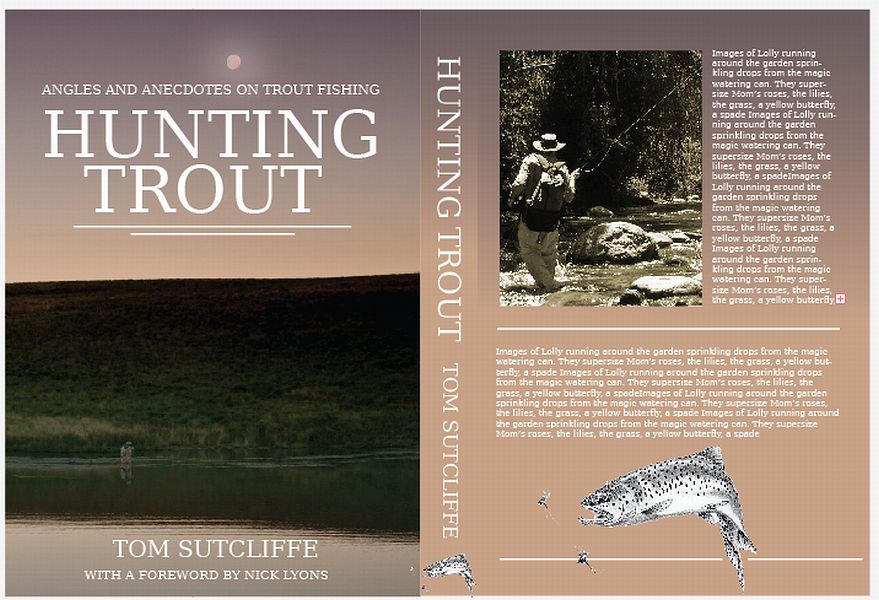
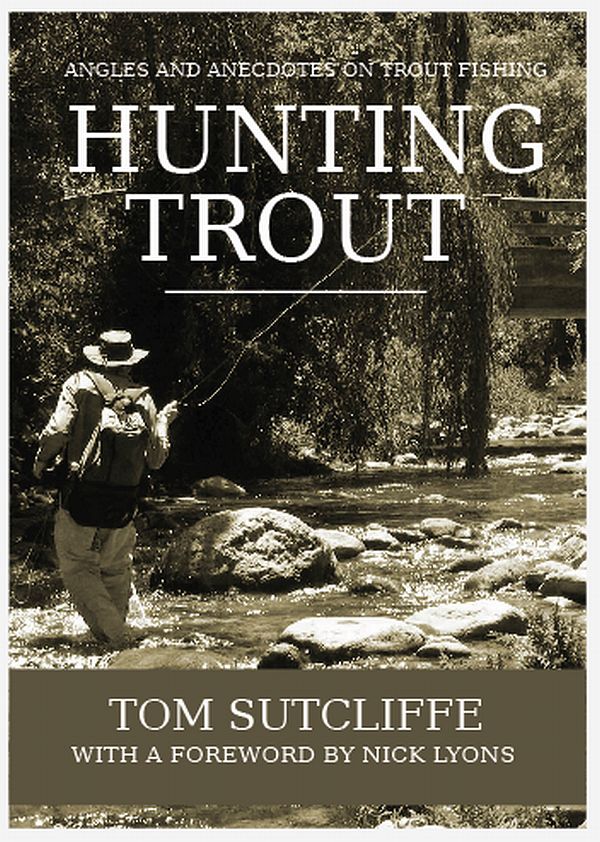
If you feel inclined drop me an email and let me know your preference at
This email address is being protected from spambots. You need JavaScript enabled to view it.
Alison is a graduate designer with enormous artistic talent that she puts to exquisite effect on her latest laptop, an Apple Mac Pro.

My daughter Alison
THE FISHING AND HUNTING JOURNAL
Ernie Mollentze has taken over as the editor of this well known journal and the good news is that advertising rates have been cut drastically. Contact Ernie on This email address is being protected from spambots. You need JavaScript enabled to view it. for more details, or if you wish to submit an article.


